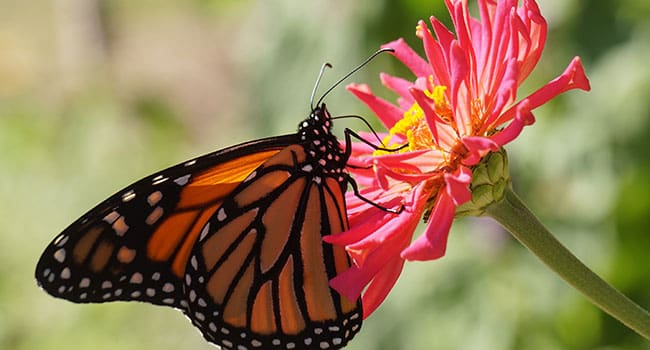 “We’re going to see the monarch butterflies at the Cerro Pelon Butterfly Sanctuary.”
“We’re going to see the monarch butterflies at the Cerro Pelon Butterfly Sanctuary.”
What?
When my friend Scott said he’d booked us into JM’s Butterfly B&B in the remote Mexican village of Macheros, Donata Guerra, Estado de Mexico, I admit to some misgivings.
“It’s just a four-hour drive south and west of San Miguel de Allende, to the Mexican Sierra Madre range, at about 2,600 metres above sea level – the butterflies though are at 3,000 metres, about 10,000 feet. We can drive with Horacio in his van. There’s one rough bit of road we shouldn’t drive at night because of banditos, but we’ll stay an extra day and only drive in daytime.”
Banditos? Rough bit of road? To see butterflies?
My first reaction was to look up the destination on the web and do some research on safety. It immediately turned out that the proprietors of JM’s Butterfly B&B, Joel Moreno Rojas and Ellen Sharp, had a magnificent website, full of useful information. I was also able to read David Suzuki’s latest piece on monarch butterfly conservation, and to discover that Catherine McKenna, Canada’s federal minister of Environment and Climate Change, had recently been to Mexico to see the mariposa monarca.
Once again, Scott had hit a marvellous hot topic for our annual three-couple trip to San Miguel de Allende.
On the conservation front, the news was not promising. Since the 1990s, Suzuki reports that the eastern monarch population has declined by 90 percent. Each year, the monarchs make a three-generation flutter to Canada (arriving in a broad band from south Saskatchewan to the Maritimes), launching from four high altitude sites in the Sierra Madre early in March.
We would be arriving just before the mass liftoff from a forest of oyamel fir trees. In peak years, more than one billion monarchs start the 4,800-km journey to Canada. The chief impediment to the monarchs’ success is lack of food – specifically milkweed bushes. As a ‘non-economic’ plant, farmers along the migration route have been spraying milkweed with glyphosate (Roundup weed killer). In the winter of 2013, Suzuki reports that total numbers of monarchs arriving in Canada may now be as low as 35 million.
Clearly, if you want to see the monarch migration, and perhaps become an advocate for their longevity and survival, now is the time to go. And so we did.
The road trip was relatively uneventful, with one exception. About an hour from our destination, as we drove through a small agricultural village, a convoy of five camouflage-painted pickup trucks passed us going in the opposite direction. Each had an enormous machine-gun bolted to its cargo bed, manned by a three-soldier crew. The centre man had his finger on the automatic trigger. On either side were soldiers with menacing black submachine-guns. All three, plus the driver, wore military fatigues and black balaclavas with only eye-slits. Black lettering on the truck doors proclaimed “POLICIA FEDERAL.”
We let them go by without photographing the spectacle.
Our directions to the bed and breakfast, however, were delightful. “After the turnoff from the main highway at the Cerro Pelon Butterfly Sanctuary sign, you will pass over 21 speed bumps. Turn left after bump 21. In front of you is the Macheros village sign and ejido (an area of communal land used for agriculture). Drive to the second house before the pavement ends, just after you pass the church.”
As it turned out, we made it well before sunset and the directions were perfect. The B&B had a welcoming open gate, and the two buildings inside a whitewashed stucco wall were big-windowed and inviting. Behind a desk in the efficient lobby sat Ellen (Elena) Sharp, who co-manages JM’s Butterfly B&B with her partner Joel Moreno Rojas.
Joel and Elena met in 2011, after he built the B&B buildings in his home village with money earned in a landscaping career in the U.S. Elena had just completed her PhD in sociocultural anthropology after studying vigilante justice in Guatemala. Together, they have the ideal skills for the work they’ve taken on.
Perhaps most intriguingly, they’ve put in place an ecotourism economic and community development model that’s unlike any I’ve ever experienced.
Mike Robinson has been CEO of three Canadian NGOs: the Arctic Institute of North America, the Glenbow Museum and the Bill Reid Gallery. Mike has chaired the national boards of Friends of the Earth, the David Suzuki Foundation, and the Canadian Parks and Wilderness Society. In 2004, he became a Member of the Order of Canada.
The views, opinions and positions expressed by columnists and contributors are the author’s alone. They do not inherently or expressly reflect the views, opinions and/or positions of our publication.


